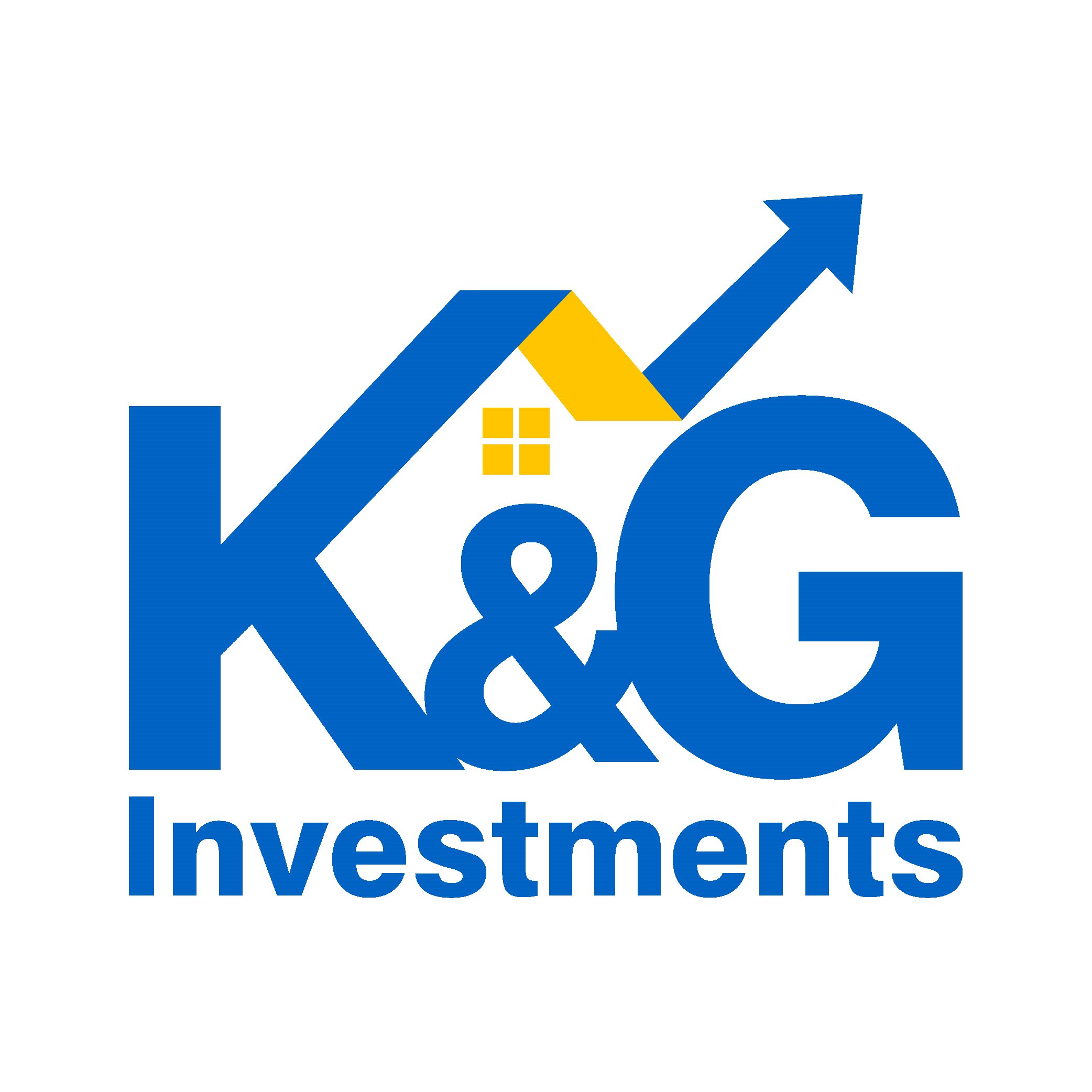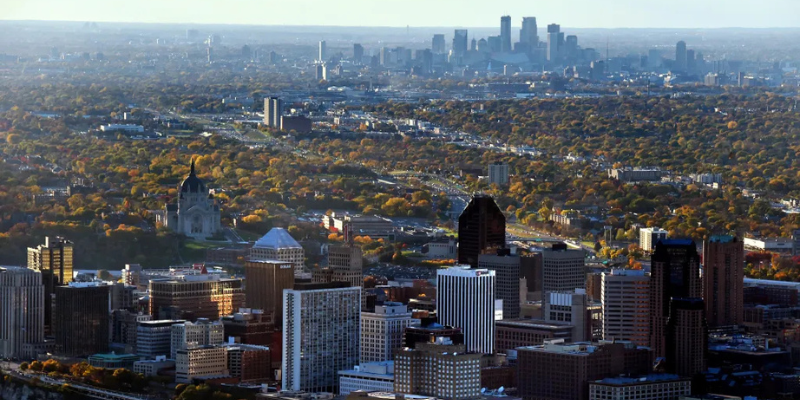
Exploring the Rich History of Twin Cities
The Twin Cities—Minneapolis and St. Paul—have a history that still shapes the types of houses built and bought.
The story stretches from Fort Snelling’s crowded barracks in the 1820s to the loud flour-packed mills that once turned the riverfront into the Bakery of the World. Stamp after stamp of time pushed the market in new directions. You can still trace the journey in Summit Hill’s regal Third Empire mansions and in the firm-faced Brownstones of Lowry Hill, where porticoes repeat their zenith and cornices still flirt with the skyline. Head a bit northeast, and charming, low-to-the-ground bungalows and sturdy craftsman homes throw their caps in the fading sunlight—sure signs of that early 20th-century Marquette-esque spirit.
Streetcar-era suburbs now guide the eyes and feet of anyone contemplating where to settle; a single stroll through Uptown or Crocus Hill reveals terracotta-roofed bungalows and stout stone three-story apartments that glitter with the meticulous care of their first owners. Those streetcar lines, once newly electrified arteries of daily commerce, still radiate warmth and intimacy, quietly guarding the memory of past cultural upheavals and expansions.
Like wrinkles that, far from flaw, disclose a biography, every gabled dormer and iron-decked balcony fastens a private micro-story to the broader Twin Cities mosaic. That accumulated narrative lives on in the spreadsheet of appraisers and the reverent murmurs of preservationists. Investors, powerless to ignore the interplay of biography and balance sheet, find the market both finely tempered and playfully elusive.
Cultural Diversity in Twin Cities: A Melting Pot of Traditions
The Twin Cities, comprising Minneapolis and St. Paul, boast remarkable cultural diversity that significantly influences the local housing market.
Across the Twin Cities, street festivals and Sunday gatherings echo with distinct languages and flavors, revealing the neighborhoods’ living story. Churches, mosques, and temples—each with its signature steeple, dome, or courtyard—dot the skyline, proud testaments to different heritages side by side. Markets stocked with unfamiliar grains and spices share sidewalks with co-op groceries, attesting to an ever-evolving urban palate whose ingredients come from every continent.
The housing landscape adjusts like an artist’s easel; Queen Anne porches lean with timeless grace alongside new concrete-fronted condos whose large windows wink at the past. Newly poured foundations copy the gingerbread carving of their ancestors to the designer’s delight, while reopened railroad stations burst with color and fresh murals every summer. Tenants ask for prayer rooms on the first floor, first-time buyers ask to live above a coffee shop that roasts Fürth beans, and the neighborhoods continue their quiet trade: welcoming, watching, and remixing.
This diversity enhances the quality of life and attracts buyers interested in experiencing different cultures within a single metropolitan area. The blend of traditions is evident in local markets, schools, and public spaces, making the Twin Cities a dynamic place where cultural richness directly impacts real estate values and desirability.
Economic Growth and Opportunities in Twin Cities
The Twin Cities housing market, encompassing Minneapolis and St. Paul, presents a dynamic landscape of economic growth and opportunities.
Fueled by a robust job market and diverse employment sectors, including technology, healthcare, finance, and education, the region attracts a steady influx of new residents seeking prosperity and quality of life. Growing numbers of residents are pushing the real estate market and breaching price ceilings. As a result, the market is sharpening into fertile ground for developers, with cranes rising in once-neglected nodes.
The region’s existing infrastructure package—a skilled central roadway grid, well-powered fiber loop, and high-capacity utility corridors—breeds free-flowing nodes between core city edges and the tiers of suburban villas. Each surge in transport speed generates direct tilts in fundamental land values. Ongoing light rail expansions lay pedestrian-friendly stations onto this spine, routing fresh commuters toward growing rail and road intersection nodes.
As businesses expand within this thriving economy, they contribute to an increasing need for commercial real estate space alongside residential properties. The blend of cultural attractions, green spaces, and educational institutions enhances the Twin Cities’ allure as a desirable location for families and professionals looking for long-term investment stability. For homeowners looking for a quick and hassle-free sale, contact us. We are a company that buys houses in Minneapolis and other cities in Minnesota and offers fair cash deals and a smooth process tailored to your needs.
Top Tourist Attractions in Twin Cities You Must Visit
The Twin Cities, comprising Minneapolis and St. Paul, offer various tourist attractions that captivate visitors and residents alike.
The iconic Mall of America in Bloomington is a shopping paradise and a significant tourist attraction. The center has an indoor amusement park and seemingly infinite shopping opportunities. Don’t miss the Minneapolis Sculpture Garden, a short drive away; the Spoonbridge and Cherry rising out of the pond is a photo stop in more ways than one.
Back over the river, the Cathedral of Saint Paul steals the spotlight. Its soaring dome, elaborate mosaics, and cascading marble staircases push the boundaries of what is commonly encountered in American churches.
Visiting the Walker Art Center is essential for anyone fascinated by modern creativity; its rotating exhibitions draw curators and collectors worldwide. Suppose your curiosity leans more toward the past. In that case, the Mill City Museum reveals the river-powered history that made Minneapolis the flour metropolis of America, all set against the beautiful backdrop of the Mississippi River.
Minnehaha Regional Park quietly steals the spotlight with its dramatic waterfall, hiking trails, and shaded picnic spots, proving that breathtaking nature is never far from the urban core. Each neighborhood calmly sharpens the allure of the Twin Cities’ housing market, wrapping everyday living in tangible culture. Informed buyers sense the premium in strolling distance of these delights, knowing the neighborly buzz yields dividends money can’t measure—far outweighing sheet-metric foot sizes any day.
The Best Dining Experiences in Twin Cities: Food Lover’s Guide
The Twin Cities, encompassing Minneapolis and St. Paul, offer a vibrant culinary scene that significantly enhances the allure of their real estate market.
Highlighting its culinary variety, the region offers an enviable collection of restaurants appealing to every taste, whether diners seek delicate culinary artistry or the relaxed charm of comfort-food kitchens. The close presence of acclaimed kitchens now quietly shapes buyer sentiment; the promise of distinguished dining encourages long-term views of value and curates the stature of an address.
Avenue by avenue, the North Loop in Minneapolis and Lowertown in St. Paul emerge as favored corridors. Here, the rhythm of the day centers around stylish bistros, hyper-local farm menus, and the daringly delicious flavors of global kitchens, all of which weave together the living tapestry of the cities.
This rich gastronomic landscape attracts food lovers and contributes to a dynamic community atmosphere that makes living in the Twin Cities exceptionally desirable. Naturally, any prospective buyer wanting to settle down in the district makes the immediate region’s choice eateries—snug coffee counters, inventive bakeries, and spirited bistros—key to the next stage of their property decision.
Outdoor Adventures and Activities in Twin Cities
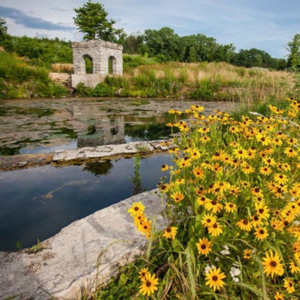
The Twin Cities, encompassing Minneapolis and St. Paul, offer a vibrant array of outdoor adventures and activities that enhance the appeal of their dynamic real estate market.
Renowned for its rolling green parks and mirror-like lakes, this region showers its inhabitants with countless pathways to play outdoors. Minneapolis’s Chain of Lakes, home to Lake Calhoun and Lake Harriet, frames waterfront estates that let residents slip straight from patios to calm waters for an early-morning paddle, and stroll along sun-specked trails later with the sunset as company.
Beyond the lakes, the Mississippi National River and Recreation Area unfurls 72 miles of shifting scenery—cliff edges, willow-lined trails, and open meadows—where footfalls, bike wheels, and migratory feathers trace the same route. A distinctive lattice of trails and meandering waterways weaves through Highland Park and Nokomis East, quietly sweetening the charm of every home for residents who welcome the company of nature.
Come winter, the landscape takes on a fresh mantle, turning Theodore Wirth Regional Park into a ski and snowboarding playground. Extended seasons and varied pursuits—aligned with the neighborhood’s easy mix of amenities—not only sharpen everyday comforts but also lend a quiet confidence to buyers weighing a Twin Cities move.
The Vibrant Arts and Music Scene of Twin Cities
Homebuyers and investors in Minneapolis and St. Paul quickly notice that the region’s dynamic cultural heartbeat translates into clear, lasting momentum for the property market.
Creative companies, musicians, and visual artists continue to settle in imaginative neighborhoods, fueling the search for unique, inspiring homes. Lofts and warehouses in northeast Minneapolis are airy and characterful. The semi-monthly Art Crawl in St. Paul’s Lowertown turns quiet streets into miniature galleries and unexpectedly raises sale prices. Famous attractions like the Walker Art Center and the Minnesota Orchestra’s symphonic dome quietly program the target radius of families, retirees, and young professionals who want to live in the Twin Cities’ cathedral of culture.
As venues host live performances and festivals throughout the year, they draw visitors who often fall in love with the lively atmosphere and consider relocating to experience this dynamic lifestyle permanently. Real estate developers are seizing the moment, designing mixed-use environments where lofts above the gallery spill over into rehearsals below, and boutiques blur the line between retail and exhibition space, drawing a population that pulses with creativity and inventiveness.
Navigating Transportation Options in the Twin Cities Efficiently
Mastering the transportation scene in the Twin Cities can turn a routine house hunt into a savvy buying strategy, and it’s often a sleeper variable in the local market that’s worth knowing. Minneapolis and St. Paul have woven a strong fabric of public transit, anchored by Metro Transit buses and the light rail lines—Blue and Green—so you can hop on, zip downtown, or reach a lakeside just as easily as the local food hall. When a listing mentions a five-minute walk to a light-rail stop, it’s no random detail; that proximity can nudge appraisals higher and save buyers time and money on daily commutes.
Additionally, the extensive bike-friendly infrastructure throughout Minneapolis and St. Paul encourages sustainable living and adds to the appeal of homes near major biking trails such as the Midtown Greenway.
For anyone leaning toward the comfort of their car, Minneapolis and St. Paul share a web of well-planned highways and interstates, principally I-35W and I-94, making it easy to zip between downtowns. Familiarizing yourself with these routes isn’t just a nice-to-know; it’s essential when assessing neighborhoods if a quick commute tops your priority list in the current tight housing market.
Educational Institutions and Academic Excellence in Twin Cities
Saint Paul and Minneapolis’ housing landscape is woven together by the pull of the area’s distinguished educational ecosystem. Renowned colleges—Macalester, Augsburg, and the sprawling University of Minnesota—attract hundreds of families, investors, and visiting scholars who regard the region not merely as a place to live but as a smart long-term bet.
In the neighborhoods hugging these campuses, square footage becomes a shared currency of ambition. Oversubscribed public and private K–12 schools add another layer of desirability, especially for families who make academic pedigree a sorting priority. When parents, graduate students, and visiting professors all hunt for units with efficient commutes, market velocity surges, and homes move faster. For instance, laminate-topped studios near an express bus to bioengineering can nudge comparables two blocks further from the rut of the mediocre market. Valuations rise, and the wave radiates, pulling every nearby block closer with quiet, invisible educational gravity.
At the same time, the new households sponsor cultural and recreational assets—indie galleries, pop-up markets, bike trails—that open fresh windows of amenity for residents and investors alike, further deepening the case for committing capital in the Twin Cities.
Upcoming Events and Festivals to Attend in the Twin Cities
The Twin Cities housing market offers intriguing real estate opportunities and a vibrant cultural scene with numerous upcoming events and festivals. Attending these events is an excellent way for those interested in the Twin Cities to experience the local lifestyle and community spirit.
The Minneapolis St. Paul International Film Festival showcases global cinema, attracting film enthusiasts and industry professionals.
Art fans should check in at the Uptown Art Fair, where neighborhood creators hang their work for all to see, delivering fresh views of the local scene. Meanwhile, the Basilica Block Party welcomes the city’s music lovers to the steps of an iconic church for a weekend of rock, jazz, and everything in between—all seasoned with the unmistakable flair of the Twin Cities.
The Minnesota State Fair, a title-holder among U.S. expos, rolls out a sprawling showcase of livestock, dizzying food options, and around-the-clock performances. These gatherings do more than entertain; they weave the city tighter and give a subtle boost to home values by highlighting the quality of life that residents enjoy all year.
Whether you’re a resident or prospective buyer in Minneapolis or St. Paul, these festivals are integral to understanding what makes the Twin Cities housing market so dynamic and appealing.
Real Estate Trends and Housing Market Insights for Twin Cities
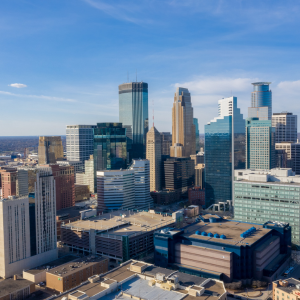
The Twin Cities housing market is a dynamic and evolving landscape, characterized by intriguing real estate trends and insights. In recent years, the demand for homes in Minneapolis and St. Paul has surged, with buyers drawn to the area’s vibrant cultural scene and robust job market. This increased interest has led to a competitive market environment, where home prices have steadily risen, reflecting the high demand and limited housing inventory. For homeowners looking to sell quickly, options such as selling your house for cash in St. Paul and surrounding cities in Minnesota provide convenient solutions in this competitive climate.
Consequently, would-be buyers face frenzied offers, especially in sought-after ZIP codes. Despite this tight climate, a rising slate of new builds is helping to diversify what’s available, gradually increasing inventory for those still in the market.
In turn, sustainable design is moving from the periphery to the centerpiece of many of these projects—rooftop panels, optimized insulation, and low-water landscaping are no longer optional add-ons, but baseline considerations. The rental side is equally lively; a steady flow of recent graduates and graduate students is keeping pressure on high-rise and townhome developments, and metro rent escalations are a by-product of that growth.
Overall, the Twin Cities real estate scene offers opportunities and challenges as developers and policymakers strive to balance growth with affordability in this thriving metropolitan area.
Health and Wellness Resources Available in Twin Cities
Whether buying your first home or relocating, the Twin Cities offer more than just houses; they offer a lifestyle anchored in well-being. Minneapolis and St. Paul are home to outstanding health resources, with institutions like the Mayo Clinic Health System and Abbott Northwestern Hospital delivering advanced care just a short drive or light-rail ride away. Set against this backdrop are miles of parks and scenic routes—Minnehaha Park’s waterfalls or the shaded paths of Como Park—inviting residents to swap screens for fresh air and light exercise.
That commitment to health extends well beyond major hospitals. Consumers will find year-round farmers’ markets stocked with seasonal, locally grown produce, helping to keep meals tasty and nutritious. Cyclists and walkers benefit from one of the most comprehensive trail systems in the Midwest, highlighted by the Chain of Lakes loop that weaves seamlessly through scenic neighborhoods. Whether by foot or bike, you’ll rarely be more than a few blocks from an inviting route.
The Twin Cities have quietly become a hub for wellness-centered living, with thoughtful yoga studios, guided meditation classes, and a spectrum of holistic health services all easily accessible. These community choices appeal not only to long-time residents but also to anyone considering a residential investment—the kind of buyer for whom a healthy, nourishing lifestyle matters as much as the ideal property line.
Environmental Initiatives and Green Spaces in Twin Cities
The Twin Cities housing market is increasingly influenced by environmental initiatives and the integration of green spaces, reflecting a growing commitment to sustainability. Minneapolis and St. Paul have implemented ambitious projects prioritizing eco-friendly development and preserving natural areas within urban settings. These efforts include expanding parks, enhancing public transportation, and promoting energy-efficient building practices.
The cities are known for their extensive park systems, with over 180 parks in Minneapolis alone, contributing significantly to residents’ quality of life. Urban planners have focused on creating pedestrian-friendly neighborhoods that encourage walking and cycling while reducing carbon footprints.
Additionally, local governments offer incentives for developers who incorporate green roofs, solar panels, and rainwater harvesting systems into new constructions. Such initiatives make the Twin Cities more attractive to environmentally conscious homebuyers and contribute to long-term economic growth by increasing property values and reducing utility costs.
This focus on sustainability positions the Twin Cities as leaders in environmentally responsible urban development. It ensures a healthier environment for future generations while maintaining a vibrant real estate market.
Sports Teams and Athletic Culture Thriving in Twin Cities
The Twin Cities, Minneapolis and St. Paul, are known for their vibrant real estate market, thriving sports teams, and rich athletic culture, significantly influencing the local housing landscape.
Major sports franchises like the Minnesota Vikings, Twins, Timberwolves, and Wild inject energy into the community and drive demand in nearby neighborhoods. Enthusiastic fans often seek homes near stadiums such as the U.S.
Bank Stadium and Target Field to stay close to the action, impacting property values positively. Additionally, extensive biking trails and public parks provide numerous recreational opportunities that cater to an active lifestyle.
This athletic culture fosters a strong sense of community among residents who value fitness and outdoor activities, further enhancing the appeal of living in this dynamic region. With a steady influx of newcomers drawn by professional sports events and recreational amenities, the Twin Cities housing market continues to experience growth fueled by its robust sporting scene.
Nightlife Hotspots for an Unforgettable Experience in the Twin Cities
The Twin Cities, Minneapolis and St. Paul, are known for their robust housing market and vibrant nightlife hotspots, attracting locals and newcomers.
From the bustling bars in Uptown Minneapolis to the eclectic music venues in St. Paul’s Lowertown, there’s no shortage of exciting experiences.
The Warehouse District in downtown Minneapolis offers trendy nightclubs and rooftop lounges that provide sweeping views of the city skyline. Meanwhile, Dinkytown near the University of Minnesota is lively with unique pubs and late-night eateries catering to college students and young professionals.
In St. Paul, West 7th Street has historic taverns and modern cocktail bars that reflect the city’s rich history and contemporary flair.
These nightlife destinations not only enhance the cultural fabric of the Twin Cities but also play a significant role in driving demand for nearby real estate, as many homebuyers are drawn to neighborhoods that offer easy access to these unforgettable experiences.
Shopping Destinations That Define Retail Therapy in Twin Cities
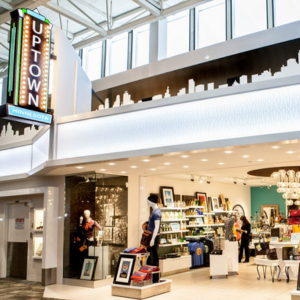
The Twin Cities, comprising Minneapolis and St. Paul, offer a vibrant retail scene that significantly influences the local real estate market.
Known for its diverse shopping destinations, this metropolitan area is a haven for retail therapy enthusiasts. The iconic Mall of America in Bloomington is the largest shopping mall in the United States, attracting millions of visitors annually with its extensive stores, dining options, and entertainment venues.
Uptown Minneapolis offers an eclectic mix of trendy boutiques and specialty shops that cater to fashion-forward shoppers seeking unique finds. Grand Avenue in St. Paul features charming storefronts filled with locally owned businesses that provide a personalized shopping experience. These bustling shopping districts enhance the quality of life and drive demand for nearby residential properties.
Proximity to these retail hubs often results in higher property values, as homebuyers are drawn to the convenience and lifestyle offerings associated with living near such vibrant commercial centers. The dynamic interplay between retail attractions and real estate trends makes the Twin Cities housing market truly intriguing for investors and residents.
Technology Advancements Impacting Life in the Twin Cities
Technological advancements have significantly influenced the Twin Cities housing market, transforming residents’ engagement with real estate. Smart home technology is becoming increasingly prevalent, allowing homeowners in Minneapolis and St. Paul to control climate, security systems, and appliances through smartphone apps. This integration enhances energy efficiency and offers convenience for busy urban dwellers.
Virtual reality (VR) tours have revolutionized house-hunting, enabling potential buyers to explore properties from the comfort of their current homes. Real estate platforms equipped with artificial intelligence (AI) provide personalized property recommendations based on user preferences and behavior analysis, streamlining the search process for buyers and renters alike.
Additionally, blockchain technology makes transactions more secure and transparent by ensuring that contracts are tamper-proof and efficiently managed. These technological innovations are reshaping how people buy and sell homes and contribute to a more connected and efficient living environment in the Twin Cities.
Community Organizations Making a Difference Across the Twin Cities
Community organizations play a pivotal role in shaping the housing market across the Twin Cities, contributing significantly to affordable housing initiatives and neighborhood revitalization efforts. These organizations, such as Habitat for Humanity of Minnesota and the Twin Cities Housing Development Corporation, work tirelessly to address the pressing need for affordable housing by developing and renovating homes.
They collaborate with local governments, businesses, and residents to create sustainable communities that foster economic growth and social inclusion. Through innovative programs and partnerships, these groups provide critical resources like financial education workshops, homebuyer assistance, and advocacy for fair housing policies.
Their efforts help reduce homelessness and increase homeownership opportunities for Minneapolis and St. Paul low-income families.
By empowering residents through community engagement and support services, these organizations make a tangible difference in transforming neighborhoods throughout the Twin Cities into vibrant, inclusive spaces where everyone can thrive.
K&G Investments supports these community-driven efforts by offering fair cash solutions for homeowners in Minneapolis, St. Paul, and surrounding Twin Cities communities, helping families sell their houses quickly and hassle-free while contributing to neighborhood revitalization.
Sustainable Living Practices Adopted by Residents of the Twin Cities
Residents of the Twin Cities have increasingly embraced sustainable living practices, significantly influencing the local housing market. Many homeowners and developers integrate green building techniques, such as energy-efficient insulation, solar panels, and smart home technologies, to reduce environmental impact and utility costs.
Adopting rain gardens and native landscaping helps manage stormwater runoff while supporting local biodiversity in urban areas like Minneapolis and St. Paul.
Community initiatives promote shared resources through co-housing projects that optimize space and energy use. Additionally, residents are committed to reducing their carbon footprint by utilizing public transportation systems and biking paths that connect various neighborhoods.
These practices enhance the sustainability of homes and contribute to a healthier environment in the Twin Cities region.
What Are 10 Fun Facts About Minnesota?
The Twin Cities housing market, encompassing both Minneapolis and St. Paul in Minnesota, is an intriguing landscape rich with fascinating details. Firstly, did you know that the Twin Cities boast more homeownership than many other metropolitan areas? This vibrant real estate market is characterized by diverse architectural styles ranging from historic Victorian homes to modern eco-friendly constructions.
Another fun fact is that the Twin Cities are known for their extensive park systems, significantly enhancing property values and appealing to outdoor enthusiasts seeking proximity to nature. The Mississippi River, threading through the heart of these cities, not only provides stunning waterfront properties but also attracts many recreational activities that boost local real estate desirability. Moreover, Minnesota’s strong job market and robust economy have consistently supported steady growth in home prices over the years.
The region’s commitment to sustainability is evident in numerous LEED-certified buildings across residential and commercial sectors, including Minneapolis-St. Paul boasts a unique blend of urban vibrancy and suburban tranquility, offering a range of living experiences to suit different lifestyles.
It’s also worth noting that Minnesota’s harsh winters haven’t deterred buyers; instead, they inspire innovative home designs equipped for energy efficiency and comfort during cold months. Lastly, the strong sense of community in neighborhoods throughout the Twin Cities fosters a welcoming atmosphere that draws people from all over the country to invest in this dynamic housing market.
What Are 5 Interesting Facts About Minneapolis?
Minneapolis and St. Paul are part of the Twin Cities and boast a fascinating real estate market with several intriguing facts.
First, Minneapolis uniquely combines historic homes and modern architecture, blending the city’s rich history with contemporary design trends. Second, the city is known for its extensive park system, which enhances property values and offers residents unparalleled access to green spaces and outdoor activities.
Third, Minneapolis has a vibrant rental market driven by its large student population from renowned institutions like the University of Minnesota. Fourth, the city frequently ranks high on livability indexes due to its robust economy and cultural amenities, making it an attractive destination for newcomers.
Finally, Minneapolis is experiencing a trend toward sustainable housing developments, with many new projects incorporating eco-friendly designs and energy-efficient technologies to meet increasing demand from environmentally conscious buyers. These factors make Minneapolis a dynamic and appealing place within the Twin Cities housing market.
Why Is It Called the Twin Cities?
“Twin Cities” refers to the closely linked metropolitan areas of Minneapolis and St. Paul in Minnesota, renowned for their unique harmony and distinct real estate dynamics.
Although geographically adjacent, these two cities boast a rich history and diverse culture, contributing to the region’s vibrant housing market. The Twin Cities’ nickname stems from their proximity along the Mississippi River, allowing for economic interdependence while maintaining separate identities.
This dual-city configuration influences various aspects of real estate, including property values, architectural styles, and community planning. Minneapolis is often characterized by its modern urban development and bustling downtown area, whereas St.Paul offers a more historic charm with its well-preserved Victorian architecture and quieter neighborhoods. Understanding why it is called the Twin Cities provides key insights into the housing market trends. Both cities leverage their strengths to attract different types of homebuyers and investors interested in this dynamic region.
Looking to sell your house in the Twin Cities? Whether you need to sell fast, avoid expensive repairs, or simply want a smooth, hassle-free process, K&G Investments has you covered. We provide fair cash offers, care for all the details, and make selling your home simple and stress-free. Call us today at (612) 400-8070 for a no-obligation cash offer and get started on your seamless home-selling journey!
| MN | MINNEAPOLIS – ST. PAUL | NEW YORK | NEW YORK CITY | GOLF | GOLFERS |
| GOLD MEDAL FLOUR | THE WASHBURN CROSBY COMPANY | GENERAL MILLS | NEW YORK STATE | THE STATE OF NEW YORK | MINNEHAHA FALLS |
| THE MALL OF AMERICA | SKYWAY | GOLF COURSE | FORTUNE 500 | IN THE US | THE MALL OF AMERICA |
| MINNEAPOLIS IS HOME TO |
Helpful Minneapolis Blog Articles
- Selling Inherited Property With Multiple Owners In Minneapolis, MN
- Intriguing Real Estate Facts About The Twin Cities Housing Market
- Understanding FSBO Costs For Home Sellers In The Twin Cities
- How To Minimize Closing Costs In Twin Cities
- Sell Your House In The Twin Cities When Behind On Mortgage Payments
- FHA Mandatory Repairs in Minneapolis, MN
- Refinance a House After Divorce in Minneapolis, MN
- Inherited House with Sibling in Minneapolis, MN
- How to Stage a House for Sale in Minneapolis, MN
- Selling an Old House in Minneapolis, MN
- Selling a House With Solar Panels in Minneapolis, MN
- How Long Does an Eviction Process Take in Minneapolis, MN

